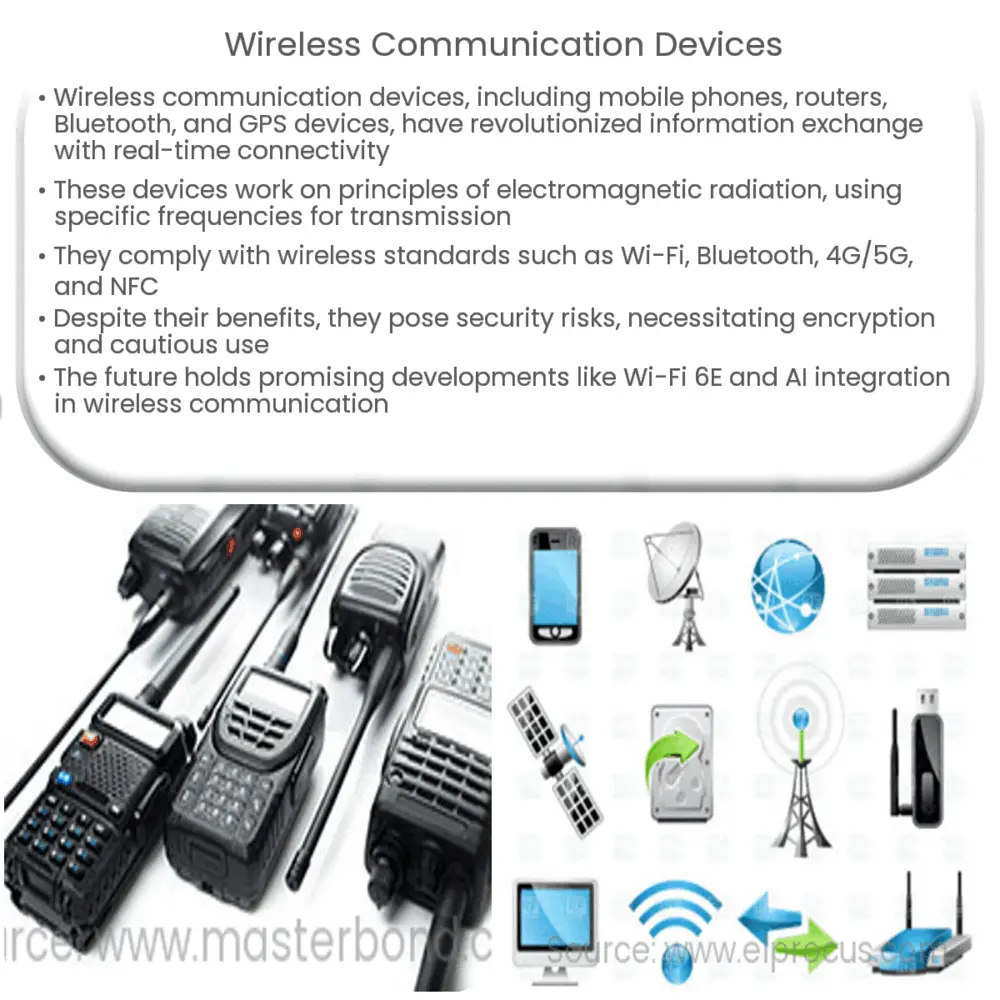Explore the world of wireless communication devices, their types, working principles, impacts, security considerations, and the promising future.

Introduction to Wireless Communication Devices
Wireless communication devices have revolutionized the way we share and receive information, enabling seamless connectivity and real-time interaction. These devices facilitate communication without the need for a physical connection by using electromagnetic waves or radio signals. Over the years, wireless technology has evolved dramatically, leading to more sophisticated devices, higher transmission rates, and better connectivity.
Types of Wireless Communication Devices
The following are the most commonly used wireless communication devices:
- Mobile Phones: With capabilities such as voice calls, text messaging, internet surfing, and multimedia consumption, mobile phones are the most prevalent wireless devices today.
- Wireless Routers: These devices convert wired internet connections into wireless signals, enabling multiple devices to connect to the internet within a specific range.
- Bluetooth Devices: Bluetooth devices such as wireless headphones, speakers, and wearable tech, use short-range radio waves to connect to mobile devices.
- Global Positioning System (GPS) Devices: GPS devices use satellite signals to provide precise location and timing information, often used in navigation and mapping services.
The Science Behind Wireless Communication
Wireless communication is based on the basic principles of electromagnetic radiation and radio wave propagation. When an electronic device sends data, it is converted into radio waves by an antenna and transmitted wirelessly. The receiver then converts these radio waves back into data.
Radio waves are part of the electromagnetic spectrum and are characterized by their frequency and wavelength. These properties, along with power level, determine the reach and quality of the wireless signal. Devices such as mobile phones and Wi-Fi routers often use frequencies in the gigahertz (GHz) range.
Wireless Communication Standards
Wireless communication devices adhere to specific standards or protocols to ensure compatibility and efficient data transmission. The most common standards are:
- Wi-Fi: This standard allows devices to connect to a local area network (LAN) wirelessly. The latest standard as of my knowledge cut-off in 2021 is Wi-Fi 6.
- Bluetooth: A short-range communication standard used for connecting devices within a small area.
- 4G/5G: These are standards for mobile communication offering high-speed data transmission.
- NFC (Near Field Communication): This standard allows for wireless communication between devices when they are within a few centimeters of each other.
Impact of Wireless Communication Devices on Society
Wireless communication devices have drastically changed our everyday lives, transforming how we interact, work, and play. They have fostered global connectivity, making it possible to communicate with anyone, anywhere, at any time. They’ve facilitated telecommuting, remote learning, and real-time information sharing, contributing significantly to our digital, connected world.
Security Considerations
Despite their numerous benefits, wireless communication devices also pose certain security risks. Since data is transmitted wirelessly, it can be intercepted or hacked. Encryption protocols, like WPA2 and WPA3 for Wi-Fi, are used to ensure data security, but users must remain vigilant about the networks they connect to and the information they share wirelessly.
Future of Wireless Communication
The future of wireless communication looks promising, with several exciting developments on the horizon. 5G technology is already here, offering data transfer speeds that far exceed those of its predecessor, 4G. Other upcoming advancements include Wi-Fi 6E, which will offer more bandwidth and lower latency, and the integration of artificial intelligence and machine learning in wireless communication.
Conclusion
In conclusion, wireless communication devices have become a cornerstone of modern life. They’ve altered the way we communicate, share data, and access information, making it quick, efficient, and in most cases, seamless. While these devices offer great convenience, they also pose certain security risks that necessitate careful use. Looking forward, as technology continues to evolve at an unprecedented rate, we can anticipate more innovative wireless devices and communication standards that will further enhance connectivity and data transfer speeds.
Whether it’s through more powerful smartphones, faster internet connectivity, or smarter home devices, the impact and influence of wireless communication devices on society is undeniable and will continue to shape our digital future.

